
|
You entered: Earth's moon
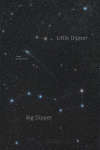 APOD: 2023 February 7 Б A Comet and Two Dippers
APOD: 2023 February 7 Б A Comet and Two Dippers
6.02.2023
Can you still see the comet? Yes. Even as C/2022 E3 (ZTF) fades, there is still time to see it if you know where and when to look. Geometrically, Comet ZTF has passed its closest to both the Sun and the Earth and is now headed back to the outer Solar System.
 Folding Europa
Folding Europa
25.08.2000
Astypalaea Linea on Jovian ice moon Europa is the broad smooth region running through these images recorded by the Galileo spacecraft in 1998. The pictures are different computer processed versions of the same mosaic -- on the left, small scale details have been enhanced while on the right, large scale features are emphasized.
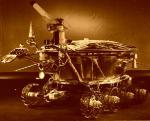 Lunokhod: Moon Robot
Lunokhod: Moon Robot
8.01.1999
On November 17, 1970 the Soviet Luna 17 spacecraft landed the first roving remote-controlled robot on the Moon. Known as Lunokhod 1, it weighed just under 2,000 pounds and was designed to operate...
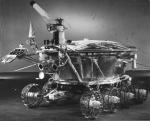 Lunokhod: Moon Robot
Lunokhod: Moon Robot
13.01.2006
On November 17, 1970 the Soviet Luna 17 spacecraft landed the first roving remote-controlled robot on the Moon. Known as Lunokhod 1, it weighed just under 2,000 pounds and was designed to operate...
 The Prague Astronomical Clock
The Prague Astronomical Clock
6.11.2017
In the center of Prague there's a clock the size of a building. During the day, crowds gather to watch the show when it chimes in a new hour. The Prague Astronomical Clock...
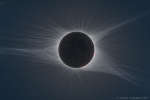 Total Solar Eclipse Corona in HDF
Total Solar Eclipse Corona in HDF
29.04.2018
How great was the Great American Eclipse? The featured HDR image shows it to be perhaps greater than we knew. On August 21 of last year, the Moon blocked the Sun for a few minutes along a narrow path across the USA.
 The Sky from Mauna Kea
The Sky from Mauna Kea
10.05.2015
What if you could stand at the top of a volcano and peer out across the universe? It the timing is right, you might see an amazing panorama like the one featured here.
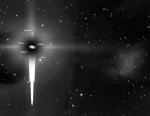 The Crab that Played with the Planet
The Crab that Played with the Planet
9.01.2003
Wandering through the constellation Taurus, Saturn made its closest approach to planet Earth last month, tilting its lovely rings toward appreciative skygazers while rising high in midnight skies. On January 4th and 5th, Saturn...
 Optical Transient Near GRB970508 Shows Distant Redshift
Optical Transient Near GRB970508 Shows Distant Redshift
13.05.1997
The GRB distance scale controversy may have just ended with a flash. Gamma Ray Bursts (GRBs) are powerful explosions occurring in seemingly random positions on the sky. They are so featureless and so poorly resolved, however, that their distances could not be determined.
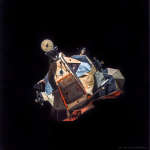 Apollo 17 s Moonship
Apollo 17 s Moonship
13.12.2024
Awkward and angular looking, Apollo 17's lunar module Challenger was designed for flight in the near vacuum of space. Digitally enhanced and reprocessed, this picture taken from Apollo 17's command module America shows Challenger's ascent stage in lunar orbit.
|
January February March April May June July |
|||||||||||||||||||||||||||||||||||||||||||||||||